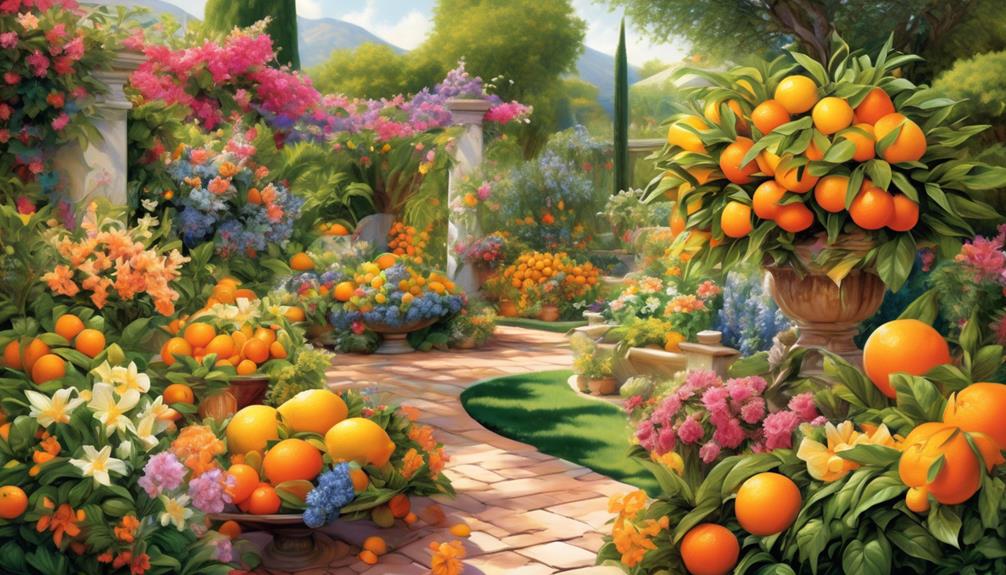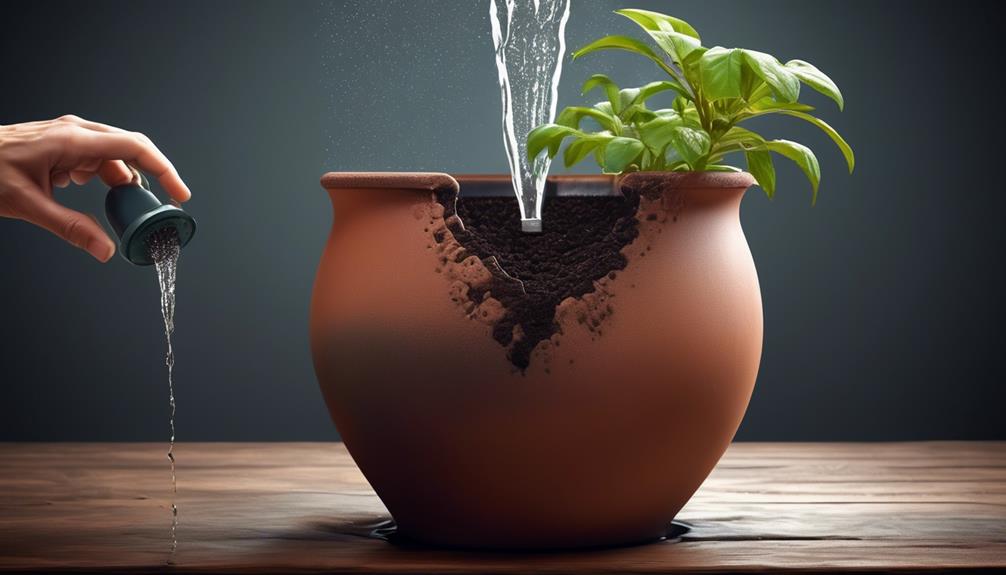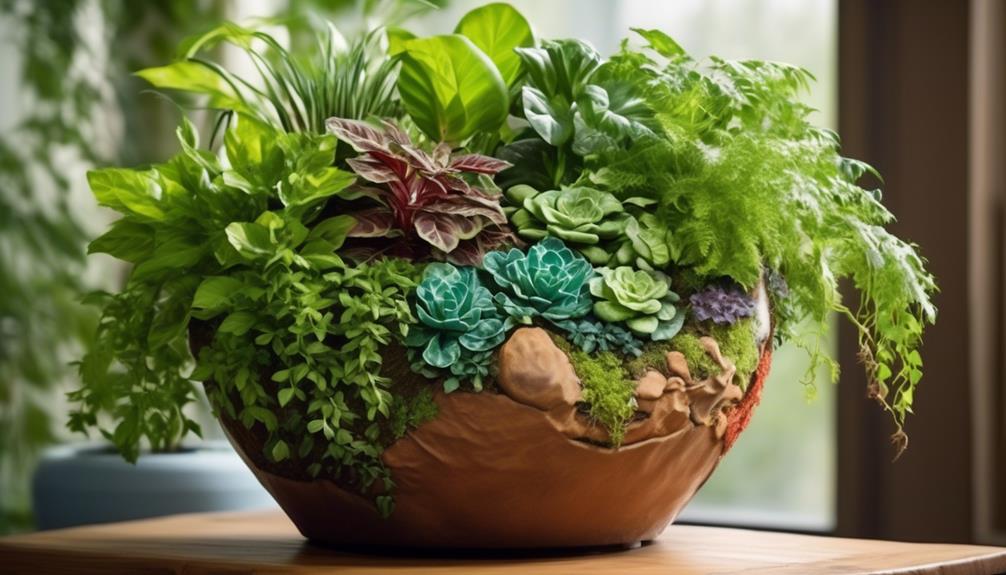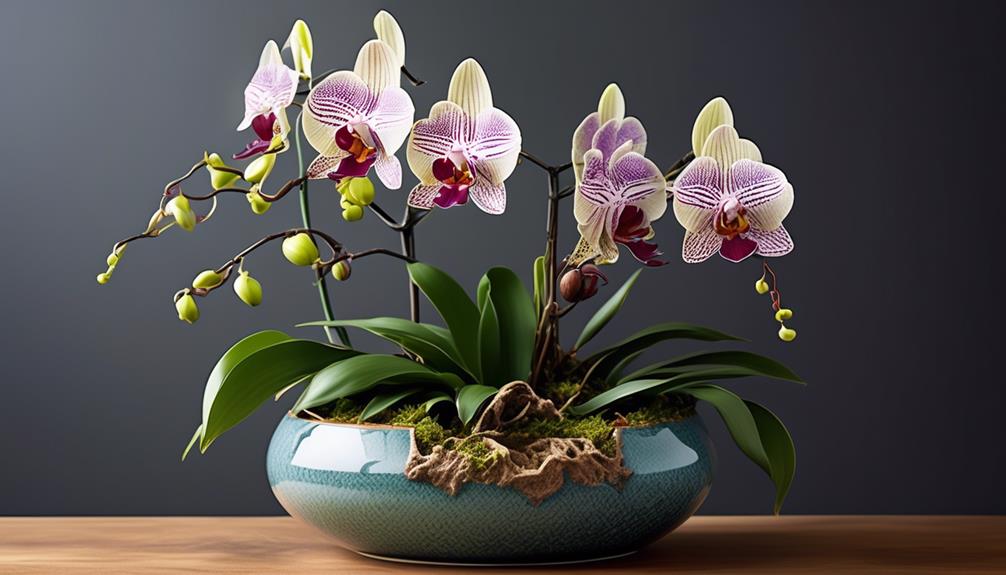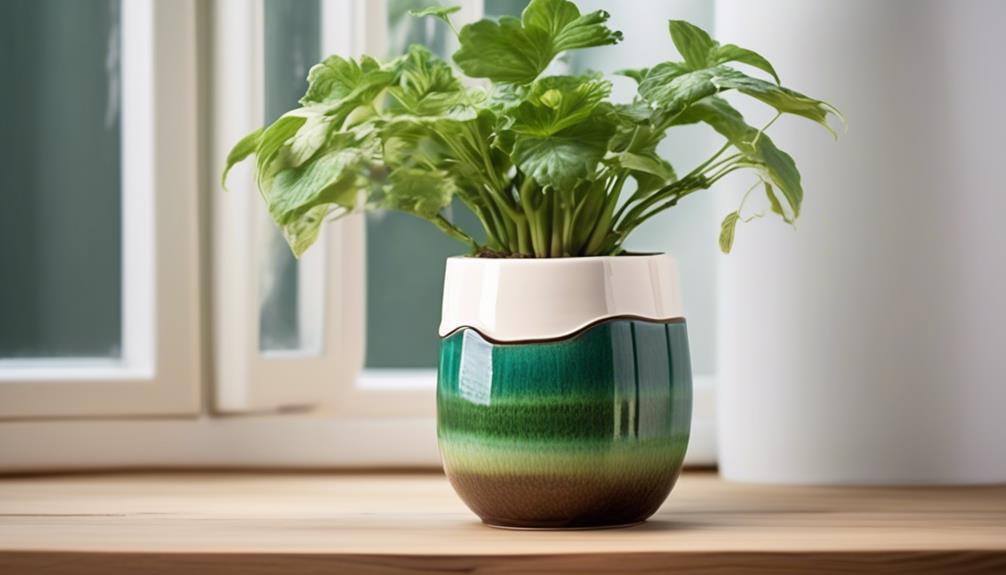We’ve all experienced the disappointment of discovering our indoor plants appearing wilted and lackluster, despite our efforts to consistently provide them with adequate water.
That's where the beauty of self-watering ceramic plant pots comes in. These innovative pots are designed to take the guesswork out of watering, providing a reliable and consistent moisture supply to your plants.
But how exactly do they work, and what are the best plants to pair with these pots?
Stay tuned as we explore the benefits, technology, and practical tips for using self-watering ceramic plant pots to keep your green friends thriving.
Key Takeaways
- Self-watering ceramic pots significantly reduce watering frequency, promoting water conservation.
- The technology utilizes a water reservoir and a wicking mechanism to provide precise moisture supply to plants.
- Self-watering pots are suitable for plants with moderate water needs and adaptable root systems, both indoors and outdoors.
- Regular maintenance, such as checking the water level indicator and cleaning the watering system, is important for the pots' proper functioning.
Benefits of Self-Watering Ceramic Pots
We have observed that self-watering ceramic pots significantly reduce the frequency of watering required for plants, providing a more consistent and controlled moisture supply. This has a positive environmental impact by promoting water conservation. The self-watering mechanism of these pots ensures that plants receive the precise amount of water they need, minimizing wastage and runoff. By conserving water, these pots contribute to a sustainable approach to plant care, aligning with the values of environmental stewardship.
Moreover, the long-term benefits of using self-watering ceramic pots translate into cost savings for individuals and businesses. While the initial investment may be slightly higher than traditional pots, the reduced water usage and plant maintenance requirements result in long-term financial savings. This makes self-watering ceramic pots a worthwhile and practical long-term investment for those looking to efficiently maintain healthy plants while also being mindful of their expenses.
How Self-Watering Technology Works
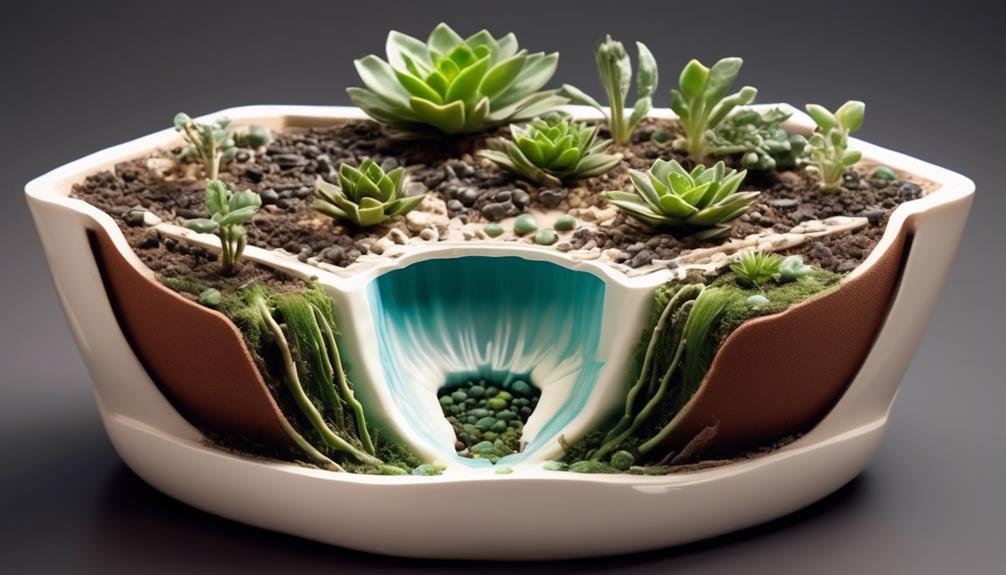
The efficiency of self-watering ceramic pots in providing precise moisture supply for plants stems from the innovative technology that regulates water distribution within the pot. The self-watering technology works by utilizing a system that ensures optimal watering efficiency and soil moisture for plants. This technology consists of a water reservoir, a wicking mechanism, and a water level indicator. The water reservoir holds the excess water, preventing overwatering and water wastage. The wicking mechanism, typically made of a porous material, draws water from the reservoir and delivers it to the soil as needed, ensuring a consistent supply of moisture for the plant roots. The water level indicator allows users to monitor the water level in the reservoir, making it easy to know when it's time for a refill. This simple yet effective technology takes the guesswork out of watering plants, providing them with the right amount of moisture they need for healthy growth.
| Watering Technology Components | Description |
|---|---|
| Water Reservoir | Holds excess water |
| Wicking Mechanism | Delivers water to soil |
| Water Level Indicator | Monitors water level |
Best Plants for Self-Watering Pots
When selecting plants for self-watering pots, it's important to consider their specific water requirements and root structure to ensure optimal growth and maintenance.
For indoor plants, options such as pothos, spider plants, and peace lilies are well-suited for self-watering pots due to their moderate water needs and adaptable root systems. These plants thrive in low to moderate light conditions, making them ideal choices for indoor settings.
Outdoor plants like succulents, such as aloe vera and echeveria, are excellent choices for self-watering pots due to their drought-resistant nature and ability to store water in their fleshy leaves. Additionally, herbs like rosemary, thyme, and sage are suitable for outdoor self-watering pots as they're relatively low-maintenance and can tolerate drier soil conditions.
When considering drought-resistant options, it's essential to choose plants that can thrive with minimal water and have root structures that are compatible with self-watering systems. Selecting the right plants for self-watering pots ensures that they receive the appropriate amount of water while promoting healthy growth and vitality.
Maintenance Tips for Self-Watering Pots
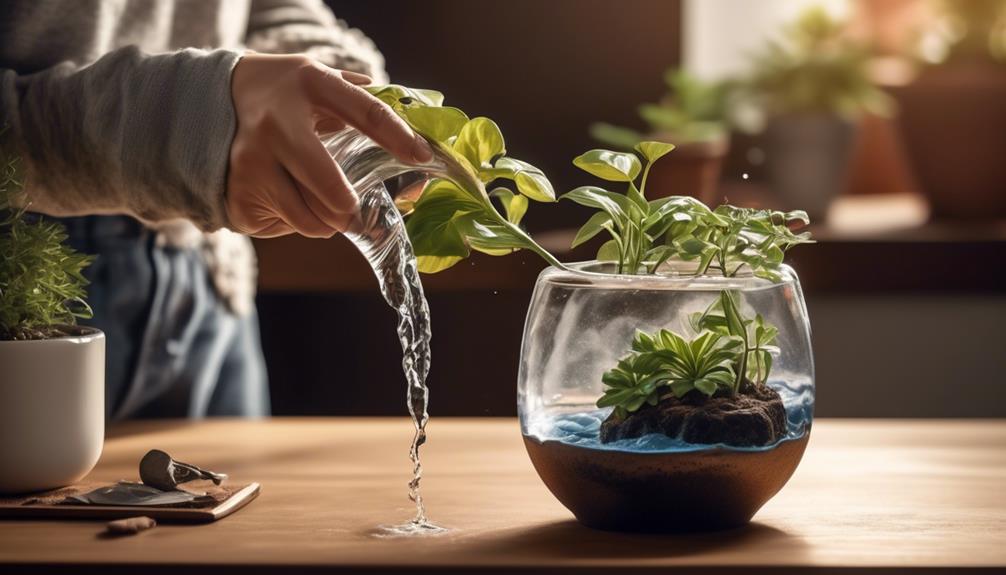
To maintain self-watering pots effectively, it's essential to regularly check the water level indicator and refill the reservoir as needed. The watering frequency for self-watering pots depends on various factors such as plant type, environmental conditions, and pot size. It's crucial to monitor the soil moisture regularly to determine the appropriate watering frequency.
A general guideline is to refill the reservoir when it's nearly empty or when the water level indicator shows that the water level is low. Additionally, it's important to clean the watering system and the pot itself periodically to prevent the buildup of algae, mineral deposits, or other impurities that could affect the effectiveness of the self-watering mechanism.
When refilling the reservoir, it's recommended to use room temperature water to avoid shocking the plant's roots. By maintaining the self-watering pots diligently, one can ensure that the plants receive consistent moisture levels, promoting healthy growth and reducing the risk of overwatering or underwatering.
Choosing the Right Size and Style
Selecting the appropriate size and style of a self-watering ceramic plant pot is essential for ensuring optimal growth and health of your plants. When considering the size of the pot, it is crucial to take into account the specific needs of the plant, as well as any space constraints in your living area. Our aim is to provide you with the best options to serve your plants and enhance the aesthetic appeal of your space.
| Design Options | Aesthetic Appeal |
|---|---|
| Modern geometric shapes | Sleek and contemporary |
| Classic round pots | Timeless elegance |
| Textured finishes | Rustic charm |
| Vibrant colors | Playful and lively |
| Minimalist designs | Clean and sophisticated |
When selecting the style of your self-watering ceramic plant pot, it's important to consider the design options and aesthetic appeal. Modern geometric shapes offer a sleek and contemporary look, while classic round pots provide timeless elegance. Textured finishes bring rustic charm, vibrant colors add a playful and lively touch, and minimalist designs offer a clean and sophisticated appearance. By carefully considering these factors, you can choose a pot that not only serves your plants' needs but also complements your living space.
Frequently Asked Questions
Can Self-Watering Ceramic Plant Pots Be Used for Outdoor Plants, or Are They Only Suitable for Indoor Use?
Yes, self-watering ceramic plant pots can be used for outdoor plants. However, there are some considerations.
Outdoor suitability depends on the climate and the specific needs of the plants. Drainage concerns should be addressed, as excessive water retention can lead to root rot.
Additionally, the durability of the ceramic material in outdoor conditions and the environmental impact of production should be considered.
Are There Any Specific Types of Soil or Potting Mix That Work Best With Self-Watering Ceramic Pots?
We've found that the best potting mix for self-watering ceramic pots is one that's well-draining to prevent waterlogging.
Choosing a mix specifically formulated for container plants can enhance plant compatibility and growth.
It's crucial to consider the soil type and its ability to retain moisture while maintaining proper aeration.
This will impact the watering frequency and overall health of the plants.
Do Self-Watering Ceramic Plant Pots Come With a Warranty, and What Does It Cover?
When it comes to warranty coverage, limitations, and maintenance tips for self-watering ceramic plant pots, it's important to consider the terms and conditions before making a purchase. These pots typically come with a warranty that covers manufacturing defects and malfunctions.
However, it's essential to carefully read the warranty to understand its limitations and exclusions.
Additionally, regular maintenance and using the right type of soil can prolong the lifespan of the pot and ensure compatibility with various plants.
Are There Any Potential Drawbacks or Limitations to Using Self-Watering Ceramic Pots for Certain Types of Plants?
When considering potential drawbacks, plant compatibility is essential. Certain plants may not thrive in self-watering ceramic pots due to their specific water and soil requirements. It's important to research the water needs and root structure of the plant before choosing a pot.
Additionally, some plants may be sensitive to the constant moisture provided by self-watering pots, leading to overwatering and root rot. Understanding the needs of each plant is crucial for successful growth.
Can Self-Watering Ceramic Pots Be Used for Plants That Require a Lot of Sunlight, or Are They Better Suited for Low-Light Plants?
For plants with high sunlight requirements, self-watering ceramic pots can be suitable provided they're placed in locations with sufficient light. Certain plant types requiring intense sunlight may benefit from the consistent moisture these pots provide.
However, it's essential to monitor the watering frequency, as the self-watering feature doesn't eliminate the need for regular checks. Understanding the specific maintenance requirements of both the plants and the pots is crucial for their successful coexistence.
How Do Self-Watering Ceramic Plant Pots Work and Are They Suitable for Indoor Plants?
Self-watering plant pots provide a reservoir for water at the bottom, allowing the plant to draw up water through a wick or by capillary action as needed. This can work well for indoor plants as it helps maintain consistent moisture levels, reducing the risk of overwatering or underwatering.
Conclusion
In conclusion, self-watering ceramic pots offer a convenient and efficient way to keep your plants healthy and thriving. The technology behind these pots allows for optimal moisture levels, reducing the risk of over or under-watering.
When selecting the best plants for self-watering pots, consider those with moderate water needs such as ferns, spider plants, and peace lilies.
With proper maintenance and the right size and style, self-watering ceramic pots can be a game-changer for plant care.


